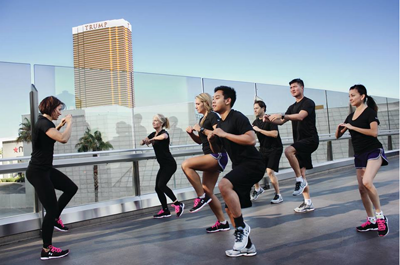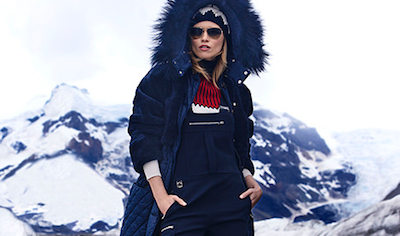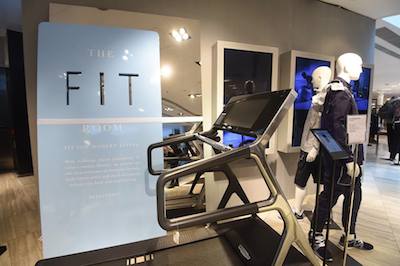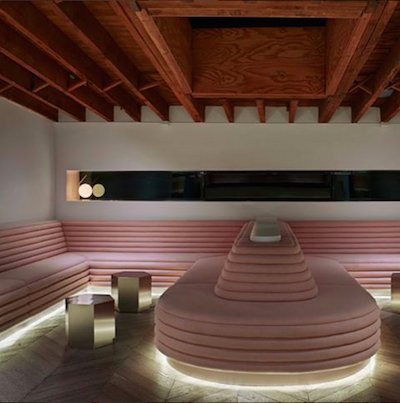As consumer spend on health and wellness grows, the luxury industry is getting in the game.
Once a trend, the notion of athleisure is now becoming part of a broader lifestyle, extending into areas of consumers’ lives beyond fashion. In a webinar presentation on March 2, analysts from Euromonitor discussed “The Future of Athleisure and Luxury Apparel,” looking at how the two are increasingly colliding.
“It’s no secret that the global luxury brands industry overall has been suffering over the last few years, and the battleground is become increasingly more challenging,” said Fflur Roberts, head of luxury goods at Euromonitor International.
“Amongst economic and geopolitical shifts taking place across the industry and within key luxury markets, a shift in cultural values is also impacting consumer behavior,” she said.
“Luxury consumers are clearly placing more value on experiences than material things, which is pushing luxury brands to expand further beyond their traditional offering and moving into this new area.”
Health as wealth
Wellness is on a similar growth trajectory to the luxury industry. Both saw low single digit growth from 2011 to 2016, but through 2020, luxury goods are projected to rise 16 percent to $450 billion while health-focused spending is expected to increase by 17 percent, reaching $833 billion.
Among affluents earning at least $150,000 a year, millennials are more apt to associate health with eating habits and exercising when compared to baby boomers and Gen X-ers. Euromonitor points out that this younger generation is the driving force behind the trend toward wellness.
As consumers seek an active lifestyle, brands are meeting the demand for attractive sporting apparel and accessories, creating fashion that takes consumers from the gym to other activities such as the office or brunch.
Consumers can now get sneakers with Chanels double C’s or hit ski slopes in Fendi gear. Kate Spade also teamed with Beyond Yoga for a collection that pairs functionality with its girly, vintage aesthetic.
Seeing the possibilities within the athletic category, Net-A-Porter launched Net-A-Sporter, a vertical carrying gear for activities such as equestrian sports, dancing, swimming and running.
Department stores have been struggling as consumers trade in things for experiences. Looking to get feet in the door, a number of retailers have turned parts of their stores into gyms.
Lane Crawford looked to become the go-to source for exercise and fitness tips with the launch of its Fit Room. This in-store space carried activewear from brands such as Nike and Adidas alongside more transitional athleisure wear.
Alongside the apparel, consumers could try out machines from Technogym and take fitness classes in yoga or indoor cycling (see story).
Similarly, Selfridges kicked off the launch of its inclusive Body Studio last year with a six-week pop-up workout studio in collaboration with Psycle and Yung Club. Now the largest department in the store, carrying everything from lingerie to loungewear, the Body Studio also features a clean eating establishment from Hemsley + Hemsley (see story).
Whereas luxury fashion has been embracing androgyny and unisex styles on the runway, athleisure is treated differently, with brands catering to a specific gender’s needs.
For instance, cyclist Elena Gromova noticed a gap in the market for women’s biking gear and founded Nakeid, a line designed specifically with females in mind.
Also, Nike launched an invitation only space for women to work out, shop and socialize in Manhattan’s SoHo neighborhood.
Aside from branded workout spaces, private gyms are adding a level of exclusivity to the search for wellness.
London’s Grace Belgravia provides a personalized 360-degree approach to health including a spa, gym, restaurant and a medical center with full-time membership starting at close to $7,000 a year. The club, founded in 2012, also encourages community through upscale trips and a supper club.
In general, the gym industry is growing, with upscale outlets such as SoulCycle and Equinox popping up.
This quest for well-being also presents opportunities for the travel industry, as consumers do not want to ditch their healthy lifestyles while away from home.

Trump Las Vegas’ boot camp program
Wellness tourism is projected for an 11 percent compound annual growth rate through 2020, according to Technavio analysts.
For Technavio’s Global Wellness Tourism Market 2016-2020 Report, wellness tourists are split into two groups, with primary wellness tourists traveling entirely for wellness purposes and secondary wellness tourists indulging in wellness-related activities but planning travel for other reasons. Primary wellness tourists traveling internationally outspend the average international tourist by at least 60 percent, signaling a growing and valuable revenue stream for hotels (see story).
Function meets fashion
Athleisure, defined as clothing that is worn for both casual activities and sports, started in the United States. The trend has recently picked up momentum in emerging markets.
Compared to the 6.5 percent global value growth of sportswear, India has a value growth of 22 percent.
Consumers’ gravitation toward athleisure has implications for apparel brands, whether or not they participate in the sportswear space. Shoppers are looking for functional properties of activewear garments, such as sweat wicking and stretch, when they are looking in other categories.
Labels have responded with multipurpose designs, such as a hybrid between a sneaker and a dress shoe.
French leather goods maker Berluti is expanding its footwear collection to athletic sneakers and created a microsite with a video to explain the new product to consumers.
The Playtime sneaker embodies Berluti’s leather craftsmanship with athletics to create the brand’s first ever sneaker. The microsite and video surrounding the sneaker collection will likely narrow focus on the new athletic footwear and create a broader audience and awareness for the brand (see story).
“Global wealth expansion is changing consumer spending habits to the extent that health is the new wealth,” Ms. Roberts said. “And consuming luxury stuff, which was once a clear indicator of wealth, showing brands, showing the fact that you traveled somewhere to buy a product, all these kind of very ostentatious trends are really now taking a back seat with healthy living and self improvement increasingly becoming a status symbol.”
from Apparel and accessories – Luxury Daily https://www.luxurydaily.com/wellness-is-the-new-luxury-status-symbol-euromonitor/
via Your #1 Source to Finding Luxury & Designer Goods, Handbags & Clothes at or Below Wholesale: Click Here.




No comments:
Post a Comment